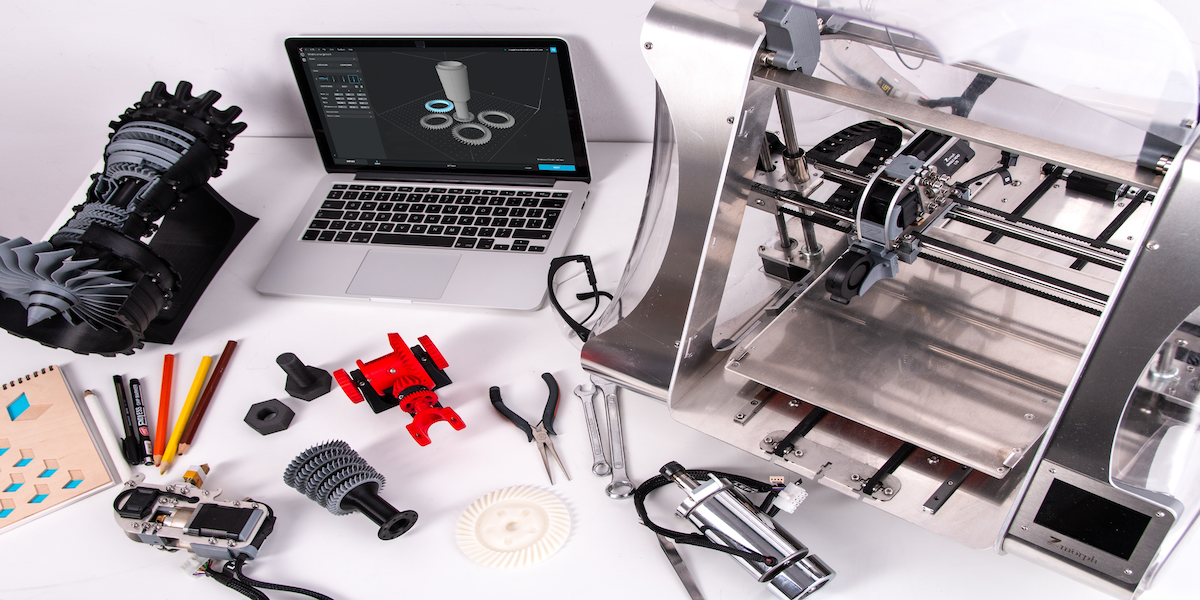Image commercially licensed from Unsplash
Recent technological advancements have transformed manufacturing, allowing businesses to manufacture innovative products more effectively. Among them, rapid prototyping has changed the way manufacturers create and test products, allowing them to bring creative ideas to market faster and more efficiently.
In this article, we will give you a glimpse of prototype manufacturing, its typical approach, and its benefits and importance in manufacturing.
Rapid Prototyping
Rapid prototyping is a technique that enables designers and engineers to quickly produce physical models of their concepts for product testing and refinement before going into production. It lets businesses test and validate their designs on a low-cost basis, making it easier to uncover design problems and make essential adjustments before committing to an expensive production process. Rapid prototyping ultimately leads to better products and higher customer satisfaction.
3D printing, CNC machining, vacuum casting, sheet metal fabrication, and rapid tooling are typical examples of prototyping processes. Designers can use 3D printers to build tangible product models within hours, allowing them to swiftly iterate on their designs and make essential modifications and enhancements. It also enables designers to develop complicated geometries that would be difficult or impossible to realize using conventional production methods.
CNC machining is another popular rapid prototyping way, empowering designers to create precise and accurate parts. With CNC machining, designers can make parts from a wide range of materials, including metals, plastics, and composites. It is still a mainstream prototyping method. Let’s dive into it further.
CNC Machining
CNC (Computer Numerical Control) machining is a revolutionary manufacturing process transforming modern product development. CNC machines use advanced computerized machines to create precise and complex parts from various materials, making them a game-changer for manufacturers.
CNC machining, as opposed to traditional manufacturing processes that rely solely on manual labor, uses digital design to produce complex designs, intricate geometries, and precision-tight parts with superior accuracy and consistency, making them ideal for creating complicated parts for a variety of industries such as aerospace, medical, and automotive.
Automation and computerization, which decreases production time and costs, are two of the major advantages of CNC machining. Furthermore, producers may simply build and alter designs using software tools like AutoCAD, Solidworks, and Inventor to produce high-quality parts in a shorter lead time.
Moreover, CNC machining is adaptable enough to produce parts with various finishes, from smooth and polished to rough and textured. Apart from the wide material range, there is also no MOQ (Minimum Order Quantity) limit. A CNC milling prototype is ideal for the one-off prototype.
CNC machining is also highly customizable, allowing designers and engineers to build parts with complicated shapes and features in different shapes, sizes, and materials. As a result, producers can create one-of-a-kind products that match specific customer requirements.
Why CNC Machining is Essential for Mechanical Engineers and Industrial Designers:
CNC machines offer several benefits that have made them an essential tool for businesses in various industries for several reasons, including:
Design Freedom
CNC machining offers unparalleled design freedom, allowing designers and engineers to create complex geometries and shapes which are previously impossible to produce. It will enable designers to push the limits of their creativity, resulting in innovative and unique designs that can set a product apart from its competitors.
High Precision
CNC machines produce unmatched precision and accuracy, ensuring that components meet exact specifications every time. It is critical in industries such as aerospace and medicine, where the slightest deviation can have severe consequences.
Quality Control
CNC machining allows for consistent quality control. CNC machines produce identical parts with minimal deviation, ensuring that everyone meets the required quality standards. The level of quality control ensures that the final product is of the highest quality, improving customer satisfaction and loyalty.
Cost-effective
CNC machining is highly economical, reducing labor costs and material waste. With high efficiency, companies can produce high-quality parts at a lower price, improving overall profitability. The affordability makes CNC machining an attractive investment for companies seeking to streamline manufacturing processes and remain competitive in today’s marketplace.
In summary, many new technologies have become game-changers in product development, enabling companies to bring innovative products to life more quickly and efficiently. As technology continues to advance, we can expect further innovation in manufacturing, opening up new possibilities for product designers and engineers to create even more exciting products.








